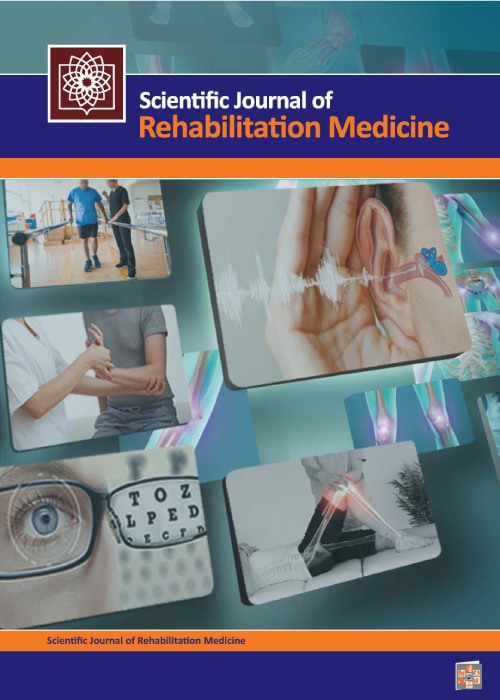Comparison of Lower Extremity Function in Non-Athlete Females with and without the Lumbar Hyper Lordosis
Author(s):
Article Type:
Research/Original Article (دارای رتبه معتبر)
Abstract:
Background and Aim
Most of the research on hyperlordosis has investigated alignment, but due to the integrity of the skeletal-muscular-neurological system and chain reactions, dysfunction of any joint or muscle is reflected as the impairment both in the function of other joints or muscles and in the quality of function of those parts. Therefore, in hyperlordotic people, any change in lumbo-pelvic region may be accompanied not only by change in the function of this region, but also with change in the function of structures below and above the lumbo-pelvic region. The aim of the present study was to compare the function of lower extremity in non-athlete females exhibiting lumbar hyperlordosis and those of individuals without lumbar hyperlordosis. Both groups had no visible mal-alignment in the alignment of their lower extremity.
Materials and Methods
In the current study, 60 female students, aged 18 to 24, living at Tehran University dormitory, were selected using purposeful sampling. A total of 30 individuals had a lumbar curvature angle greater than or equal to 58.92 degree and 30 had no hyperlordosis. In a precise measurement of the spine, the participants were investigated for any visible mal-alignment of the lower extremity. Those who were dubious about having other types of mal-alignment were excluded from the study. Lower extremity functional tests were implemented on both groups (with and without hyperlordosis). The tests included: Y, vertical jump, triple hop for distance, six-meter timed hop, and balance error scoring system. Data were analyzed using descriptive and inferential statistical methods (independent T-test) in both groups.
Results
The results indicated that in Y test (p= 0.001), vertical jump (p= 0.007), triple hop for distance (p=0.001), six-meter timed hop (p= 0.002), and balance error scoring system (p= 0.001) there were significant differences between the two groups.
Conclusion
According to the results, it could be concluded that hyperlordosis has negative effects on the function of lower extremity and it could cause a decrease in lower extremity function.Language:
Persian
Published:
Scientific Journal of Rehabilitation Medicine, Volume:8 Issue: 2, 2019
Pages:
56 to 66
magiran.com/p2002588
دانلود و مطالعه متن این مقاله با یکی از روشهای زیر امکان پذیر است:
اشتراک شخصی
با عضویت و پرداخت آنلاین حق اشتراک یکساله به مبلغ 1,390,000ريال میتوانید 70 عنوان مطلب دانلود کنید!
اشتراک سازمانی
به کتابخانه دانشگاه یا محل کار خود پیشنهاد کنید تا اشتراک سازمانی این پایگاه را برای دسترسی نامحدود همه کاربران به متن مطالب تهیه نمایند!
توجه!
- حق عضویت دریافتی صرف حمایت از نشریات عضو و نگهداری، تکمیل و توسعه مگیران میشود.
- پرداخت حق اشتراک و دانلود مقالات اجازه بازنشر آن در سایر رسانههای چاپی و دیجیتال را به کاربر نمیدهد.
دسترسی سراسری کاربران دانشگاه پیام نور!
اعضای هیئت علمی و دانشجویان دانشگاه پیام نور در سراسر کشور، در صورت ثبت نام با ایمیل دانشگاهی، تا پایان فروردین ماه 1403 به مقالات سایت دسترسی خواهند داشت!
In order to view content subscription is required
Personal subscription
Subscribe magiran.com for 70 € euros via PayPal and download 70 articles during a year.
Organization subscription
Please contact us to subscribe your university or library for unlimited access!


